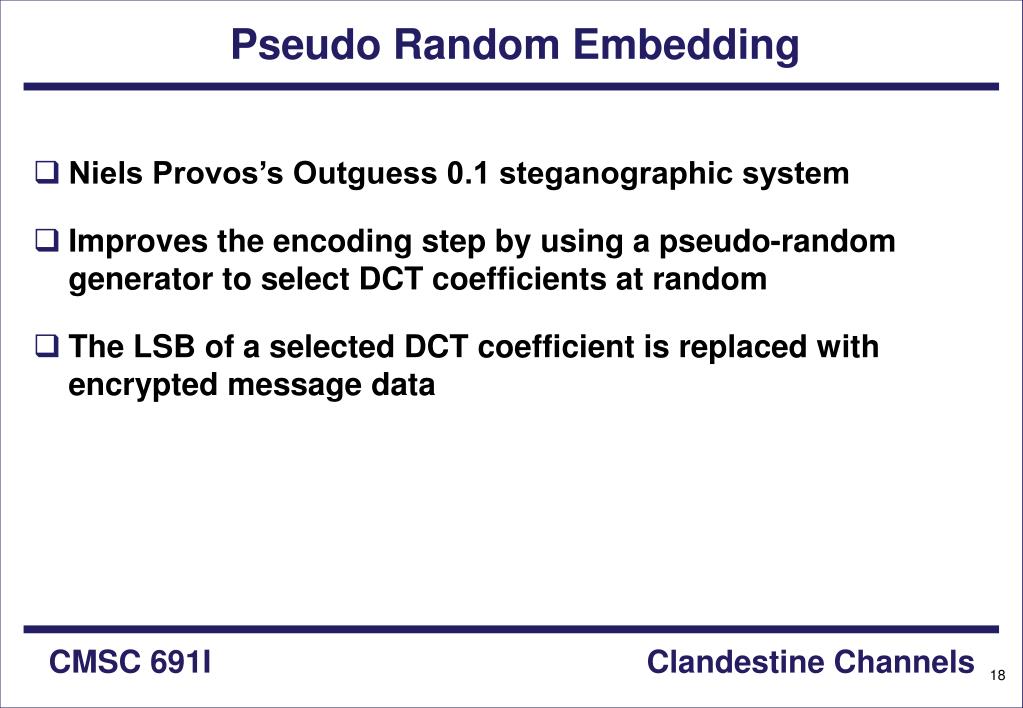

However, because changes occur in the frequency domain rather than in the spatial domain, JSteg is not susceptible to visual attacks mentioned above. It’s useful to note that the modification of a single DTC coefficient expands on all 64 pixels in the block. The JSteg exploits the LSB of DTC coefficients as redundant bits to insert hidden content within a cover media. It’s with elimination of these areas that the compression algorithm is so efficient. The areas represented by a greater density of white pixels are those with higher frequencies that are not perceptible by the human eye, and are therefore expendable.

An 8×8 pixel block is more simplistically converted in a frequency spectrum formed only by pixels in black and white. This formula represents the transformation of a Canonical Base belonging to a spatial domain in a corresponding 8×8 block belonging to the frequencies domain. Normally, 8×8 pixels of each block are transformed with the following formula: To explain what DTC is, we need to keep in mind that for each color component of an image, the JPEG format makes use of a mathematical function called Discrete Cosine Transformation, or simply DTC, in order to convert 8×8 pixel blocks (called also Canonical Bases) of an image in 64 corresponding DTC coefficients. To better understand this, we need a quick explanation about DTC. Its working routine does nothing more than consequentially replace the LSBs of DTC coefficients with bits of the data to be hidden.

It is absolutely the first algorithm of its kind and perhaps it’s also the most used. The Jsteg is one of the most classical steganographic algorithms used.


 0 kommentar(er)
0 kommentar(er)
